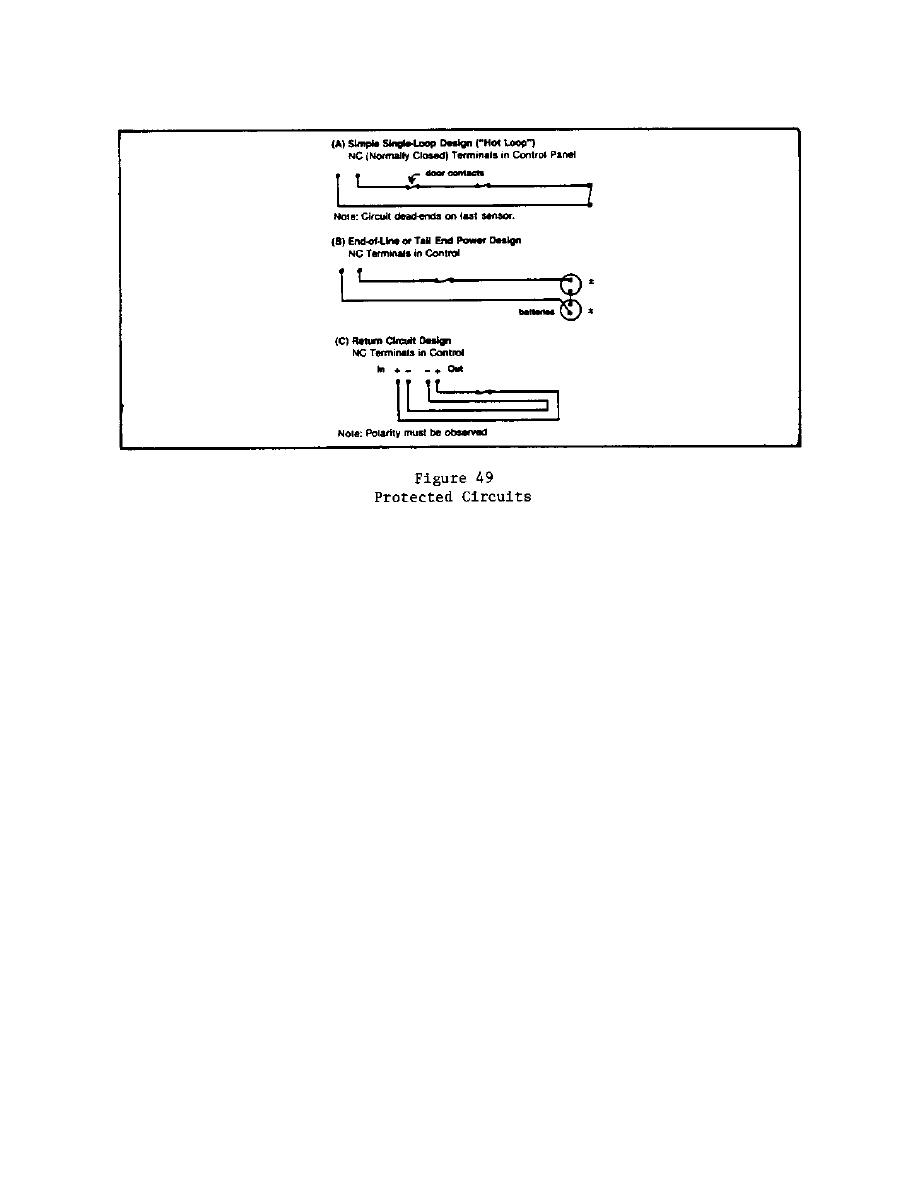

Custom Search
|
|

|
||
 have connectors approved for that environmental application. In high
security applications, the use of dedicated conduit pathways is recommended
for IDS communication networks. Where possible, shared conduit systems can
be used, although some care in mixing communication, sensor, and other data
should be exercised to preclude "crosstalk" or interference. Conduit
systems should be provided for a 25 percent expansion capability and the
addition of a pull string (cable) within the network after wiring is
installed. Compromising emanations and inductive coupling can be controlled
by use of conduit and maintaining critical electronic components with the
protective perimeter. Metallic conduit must be decoupled (insert of
nonmetallic conduit) when exiting Sensitive Compartmented Information
Facility (SCIF) areas to avoid fortuitous conductor conditions.
7.4.3 Environmentally Generated Interference. The environment of IDS
components is comprised of influences which may be detrimental to proper
system operation. Issues which affect all systems include primary and
back-up power sources, electromagnetic interference (EMI), lightning and
static, and other environmental considerations. The reader is referred in
general to the NAVFAC Design Manual Series DM-4, Electrical Engineering.
7.4.3.1 Power Considerations. The electronic components of IDS rely on low
voltage alternating or direct current circuits which are usually supported
by battery modules capable of providing minimum operating time in the event
of primary power source failure. This minimum back-up time is 4 hours.
Care to develop total electrical load for generator and uninterruptible
power supply use will control any variation in power which causes
unacceptable performance of IDS components. The load should include 105
percent of full capacity of
13.02-113
|
 |
|
 |
||